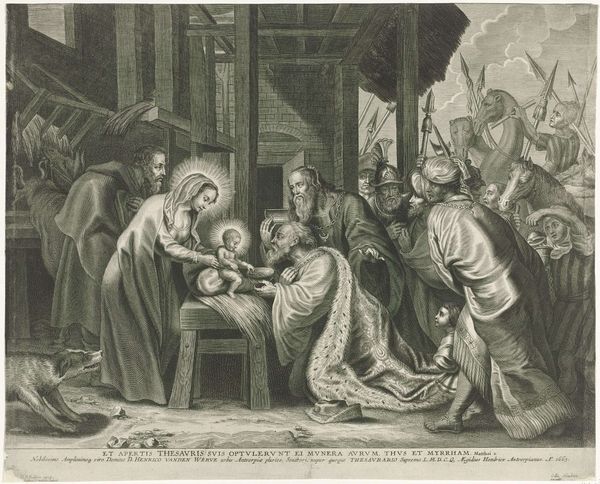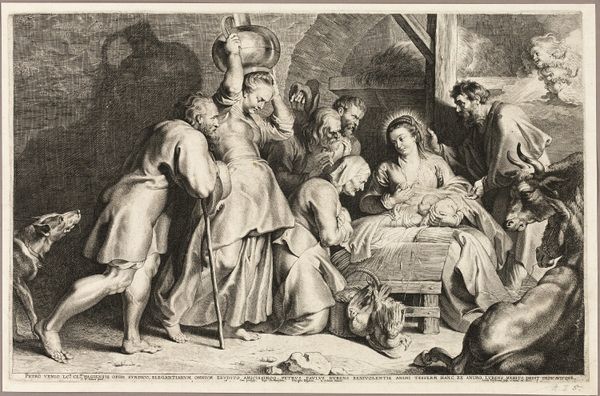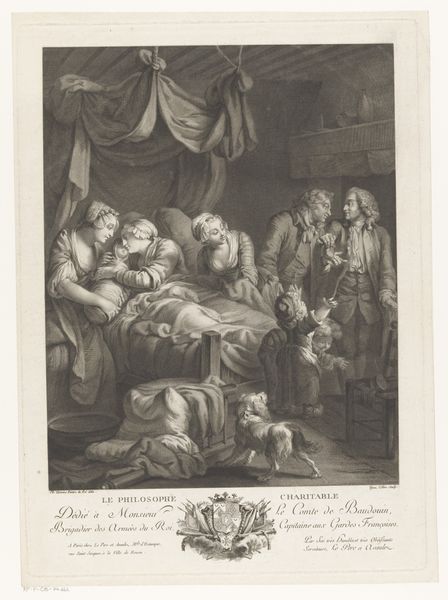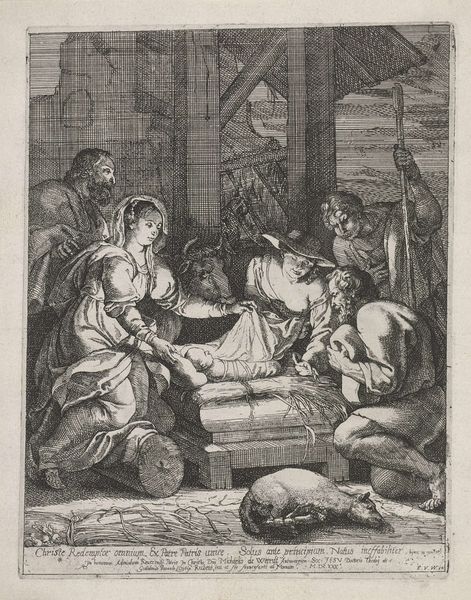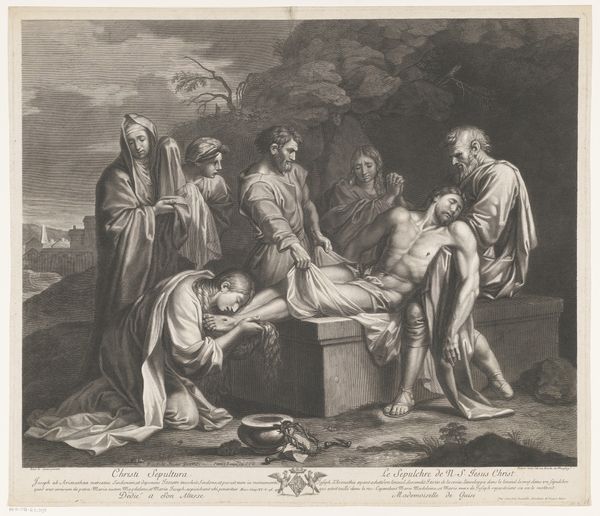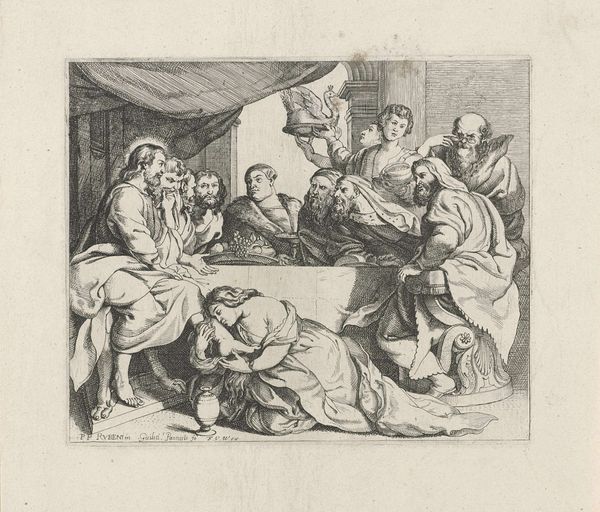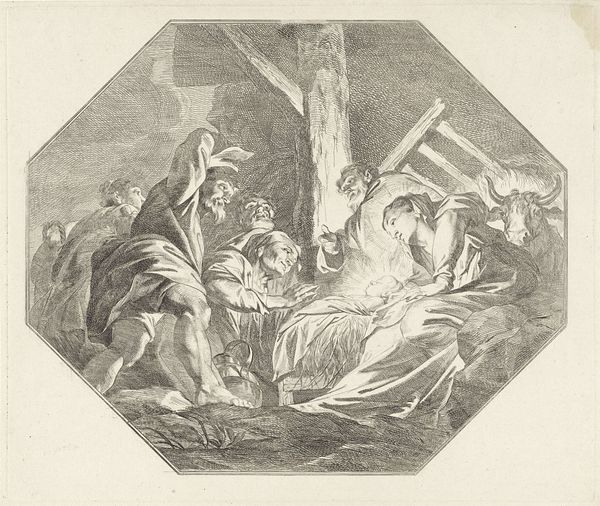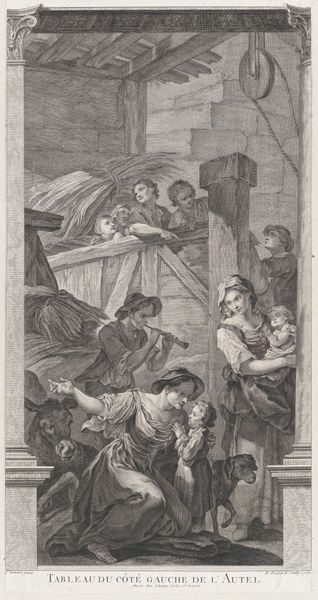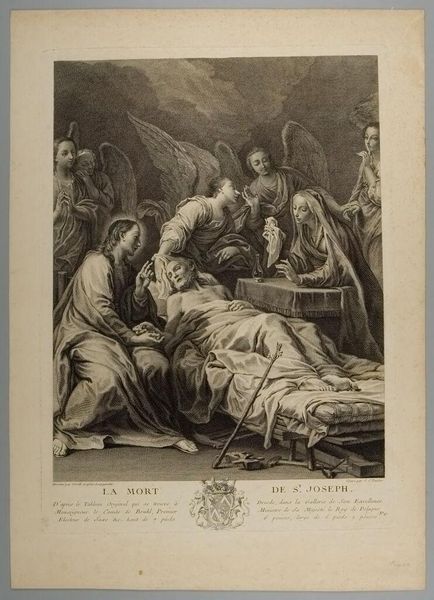
engraving
#
narrative-art
#
baroque
#
old engraving style
#
figuration
#
history-painting
#
engraving
Dimensions: height 339 mm, width 386 mm
Copyright: Rijks Museum: Open Domain
Jan Punt made this print of ‘The Adoration of the Shepherds’ sometime in the 18th century using etching and engraving. This is a print, meaning that it was made through a reproducible process. To create the image, the artist would have first applied a waxy ground to a copper plate, then scratched through it with a needle to expose the metal. Immersing the plate in acid would then bite away the exposed lines, incising the image. Fine details were probably added through engraving with a burin. The plate was then inked and printed onto paper. Consider how Punt's skilled handling of line creates the illusion of light and shadow, directing our attention to the infant Jesus. The printmaking process here facilitates the wider distribution of religious imagery, reflecting the growing accessibility of art to a broader public during this period. In its own way, printmaking democratizes the image.
Comments
No comments
Be the first to comment and join the conversation on the ultimate creative platform.
